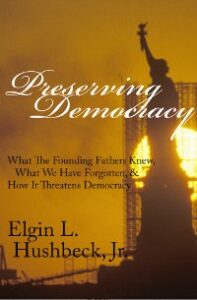The Problem With Unions
Unions have been in the news quite a bit lately, with Wisconsin at the head of 37 states seeking to limit the impact of state employee unions on their strained budgets. For the unions, given the decline in union membership over the last several decades, the fight is a matter of life and death, as government is about the only place they are still growing.
An obvious question is that if unions are so good, why are they in such trouble. Union members often blame the oppression of business for their problems, but rather than an explanation of the problem, that union members give this explanation is itself an indication of the real problem.
In the 19th century, unions battled real problems. The transformations of the economy brought about by the industrial revolution radically changed the relationship between the employer and employee and it took a century for society to adapt to the new circumstances. Union played an important role in this process.
For decades now, these problems have been addressed, and many of the union’s demands have not only been accepted, but were put into law. More importantly, businesses have continued to develop and grow. Thus, most businesses in the 21st century bear little resemblance to the businesses unions battled against in the 19th. The Robber Barons of old have, for the most part, been replaced by CEOs who focus includes things like stakeholders and how to improve employee retention. But while businesses have changed, many unions have not.
This is the core of the current problem with unions: while the world has changed around them, they are still fighting the battles of the past. Worse still, the adversarial tactics and strategies they employ against management are not only anachronistic; they are counter-productive in the current business climate. The current business environment is much more competitive, much more customer and market focused, and one in which change is far more rapid, than in the early days of unions.
Many unions, however, seek more pay and benefits, without any corresponding improvements in productivity, all the while locking in numerous work rules, greatly limiting companies’ ability to adapt to changes in the marketplace. When faced with the short-term threat of a strike, many businesses have sacrificed the long term health of their company.
Thus much of the decline in union membership has been from companies and industries failing because union contracts simply priced them out of the market or kept them from adapting to changes in the marketplace.
Given the marketplace pressures, the only place that unions have done well is in government which is not directly subject to such pressures. Yet they are not completely immune. The constant push by unions for increased pay, benefits, and regulation of the workplace has had an effect in government as well, creating an imbalance where public sector workers get paid a third more than private sector workers, while getting over two thirds more in benefits. As a result, in public schools for example, before public sector unions we spent a lot less, but taught a lot more. Schools had music programs, sports programs and did not struggle getting textbooks and other school supplies.
A big part of the problem is that public employee unions have become major political forces. They throw their support behind politicians who, once elected, are then beholden to them. The resulting huge imbalance that has emerged between public and private sector workers, while certainly not the only factor, is part of the financial problems faced by so many states, particularly those with long term contract and built in raises which limit the state’s ability to deal with deficits.
In the past, states dealt with the problem by simply raising taxes in order to pay for union contracts. But like the proverbial straw and the camel’s back, many states have already raised taxes so high that those with money are fleeing to lower tax states. Yet even with their high taxes, states still have huge unfunded commitments to unionized employees. Just as unions have bankrupted so many companies, they are now bankrupting many states.
Still, unions demand ever higher taxes, and often seem to have convinced themselves that it will only be the rich and greedy businesses that will pay them. But private sector workers pay taxes as well; so do retired people living on fixed incomes. When public employees unionize, they may be negotiating with politicians who are beholden to them for their offices, but it is the general public who will be left with the bill.
While many public sector workers like to delude themselves with the grandiose ideas of how much money they could make in the private sector, their pay and benefits far exceed their private sector counterparts. Their demands that taxes be continually raised to maintain their high level of benefits, is little more that a demand that those who are far worse off than they are, do with even less, so that they can have even more.
So is it any wonder that there is a growing movement to limit public sector unions?

